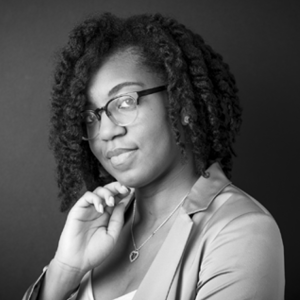This May marked the two-year anniversary of the killing of George Floyd, which sparked protests that spread from the local to national, and eventually international level in 2020. In that heady summer, corporate commitments to do better on racial justice seemed to proliferate, increasing business interest in topics such as diversity, equity and inclusion, and the question of what it takes to build an anti-racist workplace. Two years later, what progress has been made? What lessons have been learned?

To answer these questions, we spoke with Cornell University’s Courtney McCluney, winner of an Aspen Institute Ideas Worth Teaching Award for her course “Advancing Racial Equity at Work.” McCluney’s words encourage the reader to be attuned to the details of specific processes, while not losing sight of the bigger strategic picture in combatting racial injustice.
![]()
Organizations have the potential to fuel real social change. How do you hope assignments like “Critical evaluation of DEI practices” and “Building an antiracist workplace” will prepare your students for productive and informed conversations on race and equity in the workplace?
These assignments invite students to consider how current organizational practices are ineffective in advancing racial equity at work. Critiquing DEI practices requires curiosity and the capacity to recognize how inequity is systemic, pervasive, and often subconscious. Further, “Building an antiracist workplace” encourages students to imagine and create processes and norms that counteract ongoing racism. Collectively these assignments help prepare my students to move beyond conversations to action, which is sorely needed in organizations today.
One of the most fascinating things about your syllabus is the attentiveness to evolving structures of work–you reference unions, but also employee resource groups and the gig economy. What do these varied structures suggest about the challenges of meeting the needs of a diverse, 21st century workforce?
Each of these work structures present challenges and opportunities for supporting a diverse, 21st century workforce. We are witnessing a resurgence in union formation, which has historically contributed to higher wages for Black and Latino workers in traditionally low wage, precarious work. Employee resource groups provide social and professional support inside of corporations, but rarely embrace intersectionality in its design and execution. The rise of gig work sparks new questions around worker protections and rights given their classification as contract workers. Our current and future organizations will have to contend with each of these structures to advance racial equity.
We saw a real momentum shift in 2020–where conversations about racial injustice seemed to become widespread inside business. As we pass the two-year anniversary of the killing of George Floyd, how have you seen the conversation evolve and how are you bringing the new challenges into the classroom?
Unfortunately, conversations have not evolved at the pace and direction that I hoped. Many companies shift their focus with the news cycle and often look for short-term, quarterly gains from race-related programs. I encourage my students to think strategically on ways to integrate and sustain racial equity work beyond activities and one-off speaking events. Instead of reactive responses to racism, they can develop proactive systems and processes to maintain organizations’ focus.
As alumni from your course go into leadership positions across industries and sectors, what is the one lesson that you hope will stick with them throughout their careers?
I hope alumni remember that advancing racial equity is a multi-layered effort requiring courage, practice, and action. Keeping this lesson in mind will sustain their efforts and well-being!
![]()
Interested in more innovative insights for business education? Browse our complete collection of interviews with outstanding educators, and subscribe to our weekly Ideas Worth Teaching digest!

